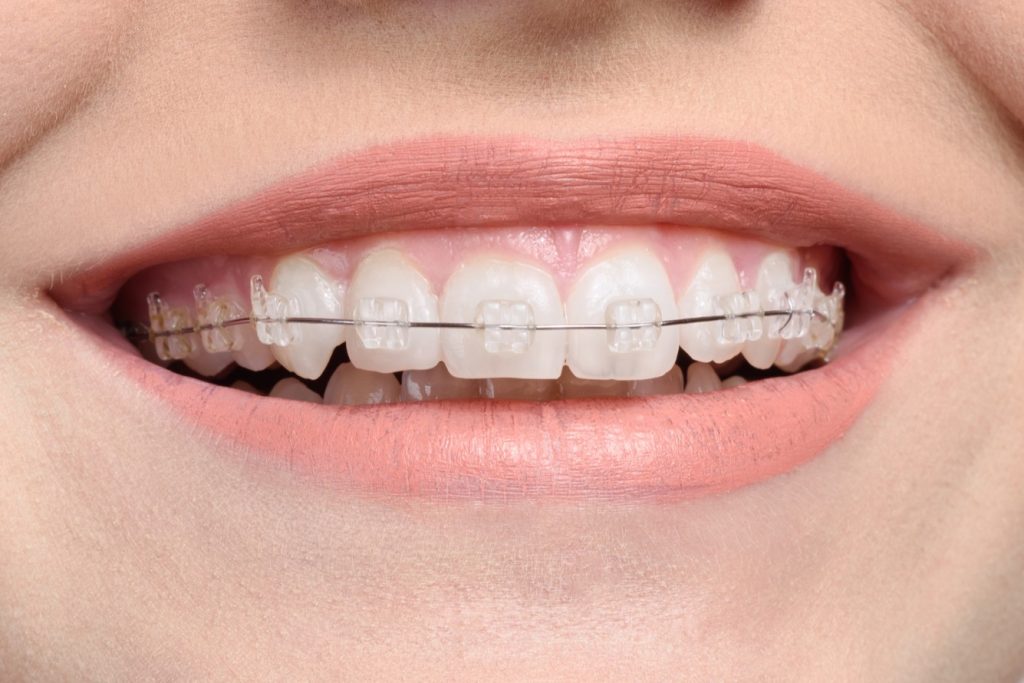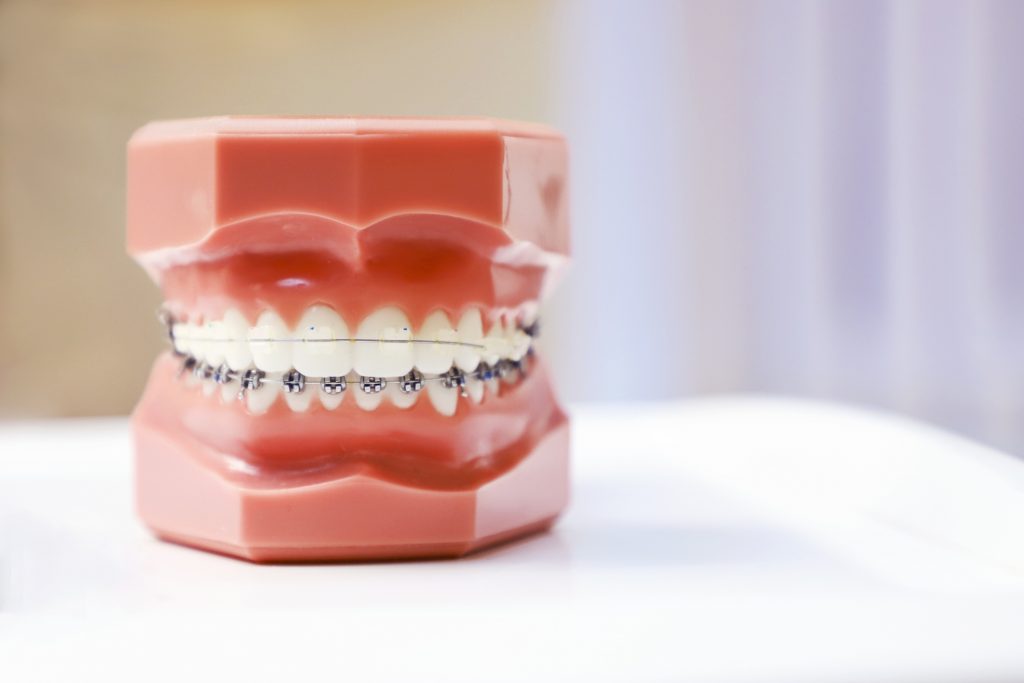Welcome to our comprehensive guide on ceramic braces, the sleek and modern solution to orthodontic treatment. In this blog post, we will delve into everything you need to know about ceramic braces, a popular choice for those looking to straighten their teeth discreetly.
From their subtle appearance to the mechanics of how they work, we will cover the aesthetic advantages, what to expect, and how they stack up against other braces options. Whether you’re a teenager apprehensive about wearing braces or an adult seeking a less noticeable orthodontic solution, this guide aims to equip you with all the necessary information to help you make an informed decision about your smile journey.
Join us as we explore the world of ceramic braces, offering insights into their functionality, benefits, and what to expect during your orthodontic treatment.
What are Ceramic Braces?
Ceramic braces are an orthodontic appliance that straightens teeth and corrects bite issues. They are similar to traditional metal braces but with a key aesthetic difference. They consist of brackets made from a ceramic material, which can be either transparent or tooth-coloured to blend in with the natural colour of the teeth. The material makes them less visible compared to metal braces.
The brackets are attached to each tooth and connected with a wire that an orthodontist periodically tightens to gradually move the teeth into the desired position. Ceramic braces offer an appealing alternative for those seeking a more discreet orthodontic treatment option while still providing the strength and effectiveness necessary for a wide range of dental alignment issues.
The Aesthetic Advantage
The primary aesthetic advantage of ceramic braces is their near invisibility, which makes them an attractive option for individuals concerned about the visual impact of traditional metal braces. The brackets of ceramic braces are made from a material that either closely matches the natural colour of the teeth or is entirely transparent, which allows them to blend seamlessly with the wearer’s teeth, making the braces much less noticeable.
This feature is especially beneficial for adults and teenagers who might feel self-conscious about wearing more conspicuous metal braces and prefer a more discreet orthodontic treatment. Maintaining a natural-looking smile during the orthodontic treatment process is a significant benefit that contributes to the popularity of ceramic braces among patients who prioritise aesthetics in their dental care choices.
How Do Ceramic Braces Work?
Ceramic braces work similarly to traditional metal braces, using the same basic orthodontic principles to align and straighten teeth over time. Here’s how they function:
Bracket Attachment: Each ceramic bracket is bonded directly to the tooth’s surface using a special dental adhesive. They are made from durable, tooth-coloured, or transparent ceramic material, making them less visible.
Archwire Connection: A thin metal wire, known as the archwire, is threaded through the slots in each bracket. This wire applies the continuous pressure needed to move the teeth into their correct positions. Even though the wire is metal, tooth-coloured or clear materials can reduce its visibility.
Pressure Application: The archwire is attached to the brackets using tiny elastic bands or ligatures. When the wire tries to return to its original shape, it applies steady pressure on the brackets, which in turn moves the teeth gradually. The orthodontist adjusts the tension in the archwire during regular appointments to guide the teeth into the desired alignment.
Continuous Adjustment: Over time, the teeth move under the influence of the applied pressure, and the orthodontist makes periodic adjustments to the braces. These adjustments may include changing the archwire, repositioning brackets, or modifying the applied force to ensure the teeth move correctly and efficiently.
This process allows ceramic braces to correct misalignments and improve the overall dental bite, leading to a straighter, more functional, and aesthetically pleasing smile.
While the mechanics of movement are similar to those of metal braces, ceramic braces offer the advantage of being less noticeable, catering to those concerned about traditional braces’ appearance. You can see the difference between ceramic braces (upper) and metal braces (lower) on the model below:
Considerations for Choosing Ceramic Braces
When deciding on ceramic braces, various factors must be considered, including their cost, effectiveness and suitability, and changes to your lifestyle for your specific orthodontic needs.
Cost
In Singapore, the cost of ceramic braces can vary based on factors like the orthodontist’s experience, the case’s complexity, and the treatment’s duration. Generally, the price range for ceramic braces in Singapore is between SGD 4,500 and SGD 7,500 or more. This cost typically includes the initial consultation, braces, regular adjustment appointments, and any necessary aftercare.
Different orthodontic clinics have their quotations and treatment packages. Some clinics offer all-inclusive packages, while others may charge separately for different aspects of the treatment process. Here at About Braces, our ceramic braces package is $4415.00 for students and $4565.00 for adults.
Additionally, patients should check if their health insurance plans provide coverage for orthodontic treatments, as this can significantly reduce out-of-pocket expenses.
Effectiveness and Suitability
Ceramic braces are highly effective for correcting a wide range of orthodontic issues, such as misaligned teeth, bite problems, and spacing irregularities, offering a performance comparable to traditional metal braces. Their ceramic material, while aesthetically pleasing due to its colour-matching ability with natural teeth, does not compromise the functional aspect of teeth straightening.
The treatment duration with ceramic braces typically mirrors that of metal braces, depending on the complexity of the dental condition. Material science advances have enhanced ceramic braces’ durability and strength, ensuring they can withstand the necessary forces to realign teeth effectively.
Therefore, ceramic braces represent an excellent choice for patients seeking a less noticeable orthodontic solution without sacrificing efficiency.
Living with Ceramic Braces
Living with ceramic braces involves adapting to a few changes in daily habits to ensure the treatment is effective and the braces remain in good condition. Here’s what to expect and how to manage life with ceramic braces:
Oral Hygiene
Maintaining excellent oral hygiene is paramount when you have ceramic braces. Because braces have nooks and crannies that can trap food particles and plaque, brushing and flossing at least twice daily are crucial to prevent staining, tooth decay, and gum disease. A soft-bristled toothbrush, fluoride toothpaste, and tools like interdental brushes or floss can help clean around brackets and wires effectively.
Eating Habits
You’ll need to make some adjustments to your diet. It’s advisable to avoid foods that can damage the braces, such as popcorn, nuts, hard candies, and gum. Also, minimizing the consumption of foods and beverages that can cause staining (like coffee, tea, red wine, and certain fruits and sauces) is essential to prevent discolouration of the ligature ties.
Regular Dental Visits
Regular visits to the orthodontist are necessary for adjustments and to monitor your treatment progress. These appointments are typically scheduled every 3 to 6 weeks. During these visits, your orthodontist will check the condition of the braces, make necessary adjustments to the wires, and replace any worn-out bands or ties.
Comfort and Adjustment
It’s common to experience discomfort or soreness in your mouth after getting ceramic braces or an adjustment appointment. This discomfort usually subsides within a few days. Over-the-counter pain relievers can help alleviate any pain. Dental wax can also alleviate areas of the braces that irritate the inside of the mouth or gums.
Impact on Daily Life
While ceramic braces are less visible, they may still impact your daily life in minor ways, such as requiring more time for oral hygiene practices or altering your eating habits. However, many adjust quickly to these changes and continue regular activities without significant issues.
Comparing Ceramic Braces with Other Orthodontic Options
Ceramic braces balance aesthetics and functionality, making them a preferred choice for those who want a less noticeable orthodontic solution without sacrificing effectiveness.
Due to their tooth-coloured or transparent materials, ceramic braces offer a more discreet appearance than traditional metal braces. However, they may have a higher price tag and require more meticulous care to prevent staining.
Compared to Invisalign, ceramic braces are less visible than metal but more so than the clear plastic aligners of Invisalign, which are almost invisible and removable but might not be suitable for treating complex orthodontic issues.
Lingual braces, attached to the back of the teeth, provide the highest level of discretion but can be more uncomfortable and challenging to clean, often costing more than ceramic and traditional braces.
Self-ligating braces, available in metal or ceramic, offer a more streamlined treatment process with potentially shorter treatment times and fewer orthodontic visits. However, like ceramic braces, the ceramic self-ligating option also blends in with the teeth for a less conspicuous look.
Ultimately, these options depend on individual needs, including the complexity of dental corrections required, budget considerations, aesthetic preferences, and personal comfort.
Ultimately,
Ceramic braces present a highly effective and aesthetically pleasing solution for those seeking orthodontic treatment. They offer the strength and functionality necessary for correcting a wide range of dental alignments, while their colour-matched appearance provides a discreet alternative to traditional metal braces.
While ceramic braces may come with a higher cost than traditional metal braces, their benefits, particularly in terms of aesthetics, make them a popular choice among working adults and image-conscious teenagers.
As with any orthodontic option, it’s essential to consider individual needs, preferences, and the specific advice of an orthodontic professional when choosing the right treatment. Ceramic braces stand out as a testament to the advances in orthodontic technology, providing an effective, less noticeable way to achieve a healthier, straighter smile.







Join the discussion 6 Comments